Puma is currently the third biggest sportswear company in the world and generates over $4 billion in revenue every year! In 1948, brothers Rudolph and Adi Dasslers differing views on how to run Adidas would create a rift between them that would lead Rudolph to leave Adidas and start his own sportswear brand. And so, Puma was born. Seeing as Rudolph already had 24 years of experience with Adidas, creating cutting edge performance boots, he was able to hit the ground running. He setup shop across town, and a fierce and bitter rivalry began between the two brothers and companies. The town of Herzogenaurach was so engulfed by it that they earned the moniker ‘the town of bent necks’ as they would always be looking down to see which of the two people would be wearing.
Similarly, to Adidas, Puma would aggressively pursue athletes, and through a combination of offering them the best equipment to succeed, and partnering in sponsorships with them, were able to become closely associated with high level athletes and athletic performance. This association has carried through to this day, garnering a lot of respect for the brand. Iconic moments on the world stage for Puma often revolve around the Olympics in its early years. These include its first ever gold medal winner in Josy Barthel who won the 1500m in the 1952 Helsinki Olympics and the Black Power Salute in the 1968 Mexico City Olympics, where Puma sponsored athletes Tommie Smith and John Carlos can be seen representing the brand. One of the craziest examples of Puma and Adidas’ rivalry in courting athletes was the infamous Pele Pact, where the brothers agreed that Pele was off limits to both of them. All seemed well until the 1970 FIFA World Cup began. As Pele walked on the pitch, he would stop the referee and ask him to wait as he bent down to tie the laces of his Puma boots, giving all the viewers a close up shot.
In 1986 Puma went public as a company, and quickly began to expand globally to match demand for athleisure clothing. The Dassler family’s ownership of Puma ended in 1989, when Rudolph’s son Armin sold their controlling shares to a large Swiss conglomerate. Since then, Puma has become experts in manufacturing and marketing a range of sporting products but find most of their sales in football, basketball and running. To maintain authority in this space they sponsor a whole range of athletes and teams. Some of the biggest teams and names its currently sponsors are Manchester City, Borussia Dortmund, Neymar, Gianluigi Buffon and more. In recent years Puma has tried to expand its appeal, striking up a deal with Rihanna to become a global ambassador, giving her a line of products to design and market. This 2015 collaboration marked a new era of Puma frequently collaborating with new types of companies and public figures such as Hello Kitty and BTS.
Rare Y2K Puma Advert featuring Pires
How to tell if Puma is vintage from the logo
Puma has worked harder than most companies to create a link between its brand image and peak athletic performance. However, its appeal has long reached beyond the hardcore athlete, and many people like to wear Puma as a fashionable brand. Some of its most iconic designs include its 1980s shell suits and track jackets, and the Puma Suede trainers. In recent years, Puma has landed on a sentiment that producing clothing for sportswear has a point of market saturation, however by pushing into mainstream fashion, they can massively increase sales, hence the 2015 appointment of Rihanna as Creative Director. The company is still playing catch up with brands like Adidas and Nike, whose collaborations with brands such as Gucci, Palace, Supreme and others have given them credibility in the streetwear community.
Since going public in 1986, the logo and branding around Puma has remained a lot more consistent (although some subtle changes have occurred in the last few decades). But since launching in 1948, it has had 11 different logos at relatively spaced out intervals, so it makes a great first point of observation.
1948 to 1968 Puma logo
- The first iteration of a Puma logo is simply an emblem
- It depicts a puma jumping through a D
- The D symbolises the D of Dassler, Rudolph’s second name
- The logo is monochrome and has remained so throughout the brands history, although the colours are sometimes changed for certain designs and tags
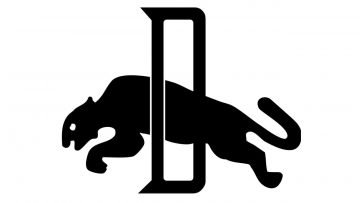
1948 to 1968 Puma logo
1951 to 1968 Puma logo
- The second Puma logo ran in conjunction with its first
- It sets the first emblem logo inside a badge
- This is the first use of the Puma text in the logo
- It also includes Rudolph Dasslers full name

1951 to 1968 Puma logo
1958 to 1968 Puma logo
- A third tag was also run alongside the first, and this was created to commemorate Puma’s collaboration with Form-strip
- This partnership was used to create the football boots that Pele would famously wear at the 1970 World Cup
- It is the image of a football boot with the Puma and Form-strip text logos above it
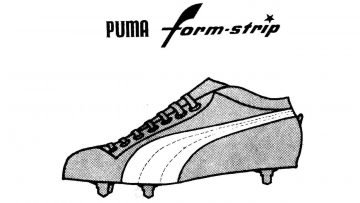
1968 to 1970 Puma logo
- Puma briefly reverted back to an emblem only logo, although this only lasted for two years
- The silhouette of the puma was updated to a shape that is more recognisable when compared with today’s logo
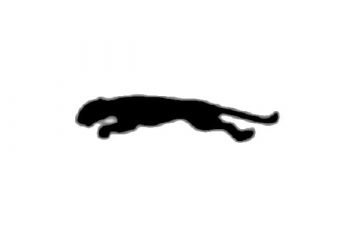
1968 to 1970 Puma logo
1970 to 1974 Puma logo
- A slight shift was then implemented, once again sticking with an emblem only logo
- However, this logo is only an outline
- But asides from this is essentially the same as the current emblem, with only a slight difference in the angle of the puma
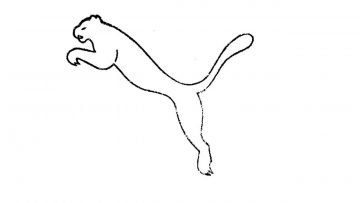
1970 to 1974 Puma logo
1974 to 1978 Puma logo
- A new structure was implemented at this time, including both a text and emblem in the logo
- The text is thick and blocky, and all capitalised
- Notice that the ‘M’ has slight indentations, which is not the case on newer logos
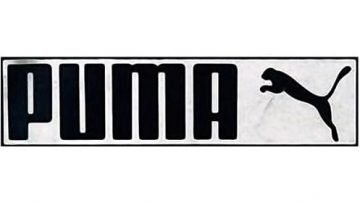
1974 to 1976 Puma logo
1976 to 1978 Puma logo
- Another logo was run at this time, and although it stopped being used on most marketing materials in 1978, it is still occasionally used on designs and tags nowadays
- This is a text only logo
- The font is like the original, but is italicised and underlined

1976 to 1978 Puma logo
1978 to 1980 Puma logo
- 1978 saw the debut of the Puma logo that is commonly recognised today
- The emblem of the Puma is set slightly above the right side of the text
- The logo at this time still had indentations on the ‘M’
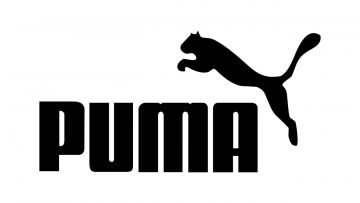
1978 to 1980 Puma logo
1980 to 1988 Puma logo
- This was a very slight variation of the legacy logo
- It is essentially the same, with two main exceptions
- Firstly, it has a white shape overlay
- And secondly (and most importantly), the indentations above the ‘M’ are gone
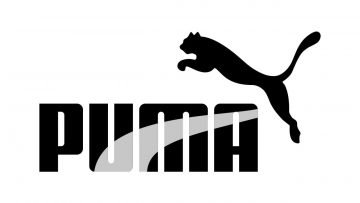
1980 to 1988 Puma logo
1988 to now Puma logo
- The current Puma logo is the same as the 1978 iteration
- The only changes being the removal of the indentations above the ‘M’
- And slightly more space in the lettering
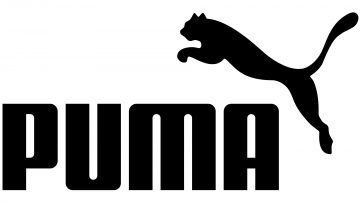
1988 to now Puma logo
How to tell if Puma is vintage from the neck tags
In line with relaunches with their logo, marketing materials and symbols have been updated across the brand, including on neck tags. We can begin to apply a few rules before directly comparing the tags to give us a good point to start with. One rule that is specific to vintage Puma neck tags is this, tags that include sizing for six different countries are vintage. Whilst some of these specific tags used the Puma logo with no indentations on the ‘M’, this is due to printing constraints as opposed to a new logo being used. Although not all Puma with a flat M is new, we can safely say that Puma with an indented ‘M’ on the neck tag is a sure sign that its vintage. Another clue to watch out for is that items with extra wash tags attached at the waist or next to the neck label tend to be newer. This is especially the case if the wash tags contain lots of information in many languages.
Confused by your vintage labels? Submit them on our vintage tag identification page, and we’ll take care of identifying your vintage labels!
1960s vintage Puma tags
- Tags that are this old are rare to come across
- They are a relatively thin loop of fabric
- They have a number size on them
- And the old Puma emblem is used that shows the eye of the puma
- Puma from this era tends to have only German writing on it

1960s Puma tags
1970s vintage Puma tags
- The tags got slightly longer
- At this time, they were printed in either black or blue
- A small tag sewn in front of the main one would have a number size on it

1970s Puma tags
1980s vintage Puma tags
- The 1980s saw the tags use much thicker material, with the information sewn into the tag instead of being printed on many of the tags
- Most of these tags still used a lot of German
- Some of them reflected the wave logo of the 1980s
- Today’s commonly used logo was introduced on these tags
- They also started to include more information on the neck tags about manufacturing and composition

1980s Puma tags
1980s to 1990s vintage Puma tags
- In the 1980s and 1990s the tags continued to be made from a thick material
- Letter sizing became more common on these tags
- Some tags did still use a printed design, and these would include 6 country sizes on them, and are very easily distinguishable from typical Puma tags

1980s to 1990s Puma tags

1980s to 1990s Puma tags
1990s vintage Puma tags
- These tags used a thick silver material, with the text sewn in
- Many of them had the term hit union on them, but it is likely that your Puma is still vintage if it looks like this but doesn’t have hit union at the bottom

1990s Puma tags
1990s to 2000s vintage Puma tags
- The next tags were one of the biggest shifts in design up to this point and first appeared in the late 1990s
- The Puma logo is set within a silver tag, enclosed by a rectangle
- The letter sizing is included to the right, and sometimes has European lettering as well
- Extra manufacture and composition information would be included on a tag next to this one or sewn in at the waist

1990s to 2000s Puma tags
2010s vintage Puma tags
- The modern Puma tags are often (but not always) set on a bright orange tag
- They include sizing for multiple countries
- Sometimes they even have the Puma website on them, which is a dead giveaway that an item is not vintage

2010s Puma tags
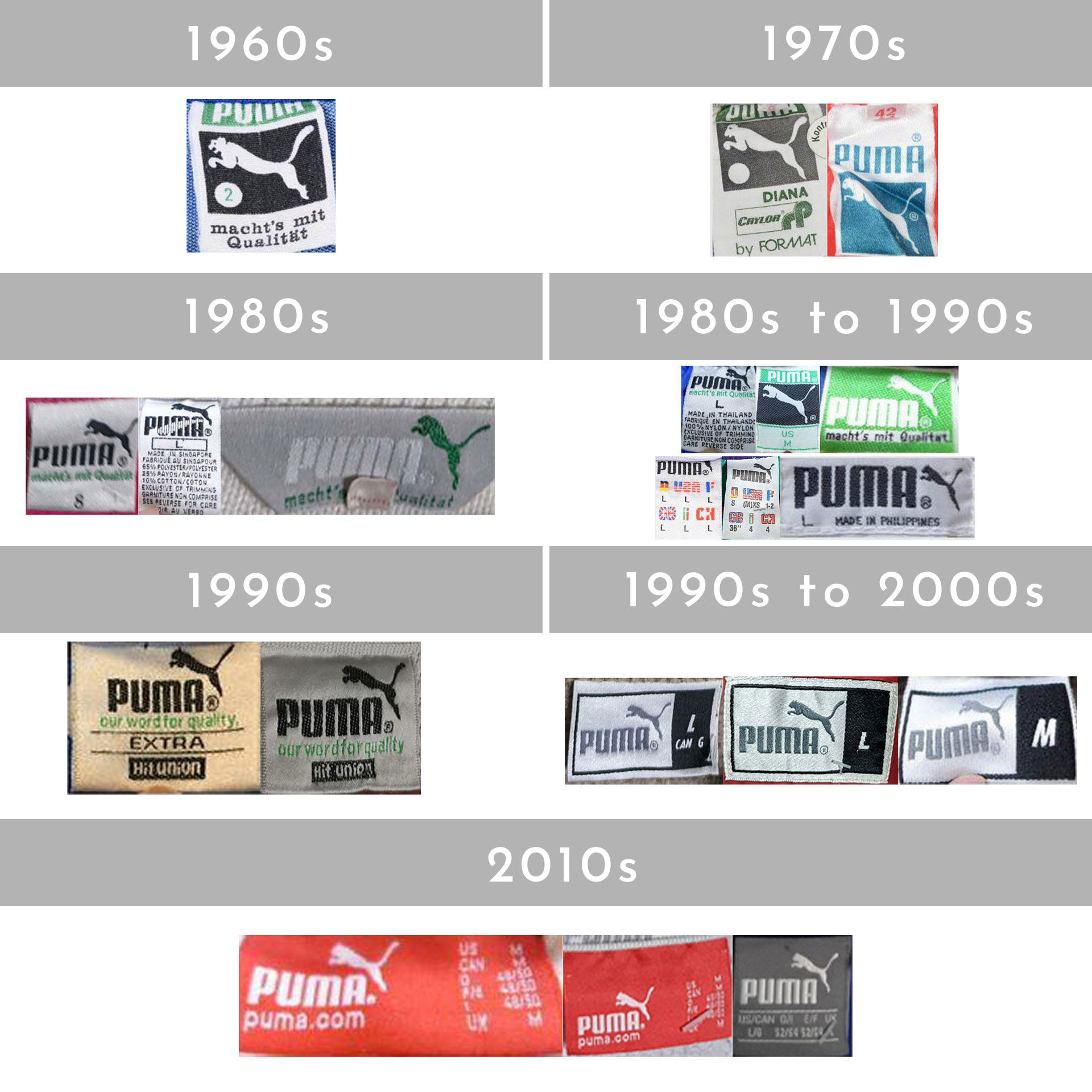
Vintage Puma tags through the years





1